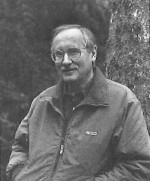The networking aspect of the Long-Term Ecological Research Program continues to increase in size and complexity along with the individual site programs. The responsibilities of the LTER Coordinating Committee (LTER/CC) and the Network Office have far outgrown the approaches (many ad hoc) to Network organization and governance that we have been using. The Executive Committee (LTER/EC), for example, has played an increasing role in conducting the business of the LTER/EC because of the challenges of operating as a committee-of-the-whole.
My retirement early next year as Chairman of the LTER/CC and Director of the Network Office after ten years in these roles has provided us with an impetus to begin systematically revamping our organizational structure. The LTER/EC began this process in earnest in January 1994 and provided recommendations to the full LTER/CC which adopted them, with modifications, in April. Below are the significant decisions made.
Electing a Coordinating Committee Chair
An important early question was “How do we select, elect, and rotate the positions of LTER/CC Chair and Network Office Director?” The position adopted was that the Chair should be a well-established senior scientist broadly recognized as a leader in ecological science. A three- year term of office was decided upon with the Executive Committee (plus one non-LTER scientist) functioning as a search committee with election by the full LTER/CC. (At press time, the LTER/EC had presented their unanimous recommendation, selected from a field of 15 nominees, for a vote at the October 19 LTER/CC meeting. The new Chair will take office in early 1995.)
Network Office Location and Funding
The location and permanence of the Network Office was another important question addressed. Should it move with the Chair? The LTER/CC agreed with the LTER/EC that the Network Office could not be moved frequently without significantly disrupting its effectiveness. The Office is, therefore, considered semi-permanent with periodic reviews of its current location and the potential for moves, perhaps at five- to ten-year intervals, to other academic institutions. The decision was also made to retain the Network Office at the University of Washington in Seattle for at least the next two years.
Another important change is the decision of the National Science Foundation (NSF) to shift the Network Office funding mechanism from a grant to a cooperative agreement, the instrument used to fund NSF’s science technology centers, and it is expected to provide for more frequent and direct interactions between NSF and the Network Office. The terms of such an agreement are negotiated annually between the home institution and NSF. The LTER/CC has been provided with drafts of the proposed work plan and budget to provide oversight and direction prior to the final negotiations with NSF.
Executive Director Committees
The workload at the Network Office now requires full-time on-site administration, which the LTER/CC feels can best be met by an executive director with full scientific credentials. The likelihood that the Chair may often reside at some location other than the Network Office further accentuates the need for a resident director. The new Chair will direct the recruitment for this position in 1995.
The size of the full LTER/CC makes it extremely difficult to operate as a committee of the whole; smaller committees are necessary to deal with important issues such as publications policy, scientific synthesis, and technology. The standing committee structure has been expanded in these areas, and the LTER/EC has played an important role in developing proposals for the full LTER/CC and will continue to do so. In order to make it more representative, the LTER/EC has been enlarged to five elected site representatives plus the Chair with staggered three-year terms. The LTER/EC will continue to meet at least four times a year in contrast to the twice-yearly LTER/CC meetings. The new committees, as well as a graduate student committee formed last fall, will be supported for an annual meeting through the Network Office. All chairs will also be invited to attend regular LTER/CC meetings.
While the process may sound bureaucratic—and not very relevant to productive scientific research!—these decisions are, in fact, very important to the health of the overall program, which is absolutely critical to the long- term health of the site-based projects and the LTER Network as a whole. Participatory, efficient self-organization is, in turn, essential to achieving a robust network program. These decisions are a major step forward in systematizing LTER’s governance structure.


 Enlarge this image
Enlarge this image